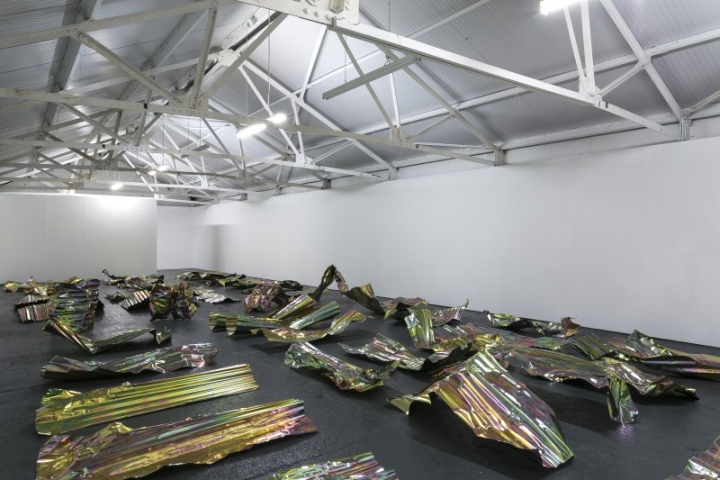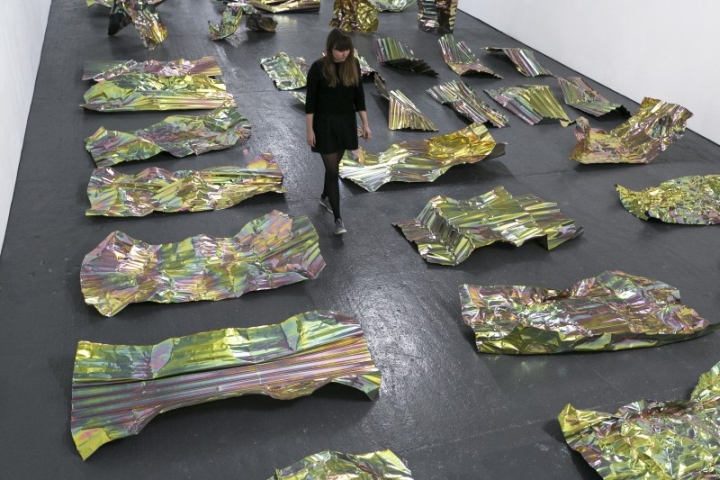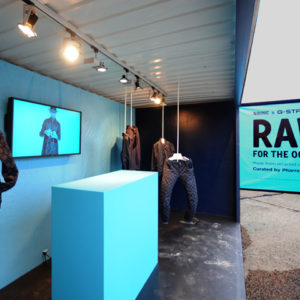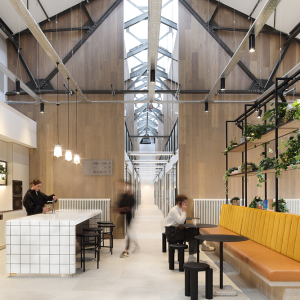


Bosse & Baum is delighted to present MOONLESS, the first site-specific project at the gallery by the Dutch artist, Frank Ammerlaan. The work is characterised by a rich, multi-layered visual style that is as poetic as it is political, and which frequently fuses contemporary issues with history, religion and philosophy. Through his floor-based installation and wall-based steel collages, Ammerlaan investigates temporality and perception, and continues his longstanding interest in materials and processes. Addressing the spaces between the visible, the tactile and the immaterial, his sculptures vibrate with fascinating chromatic encounters. Pulsating with natural light, the pieces hover at the edges of the human psyche, as the artist explores the infinite manifestations of geometry and light.
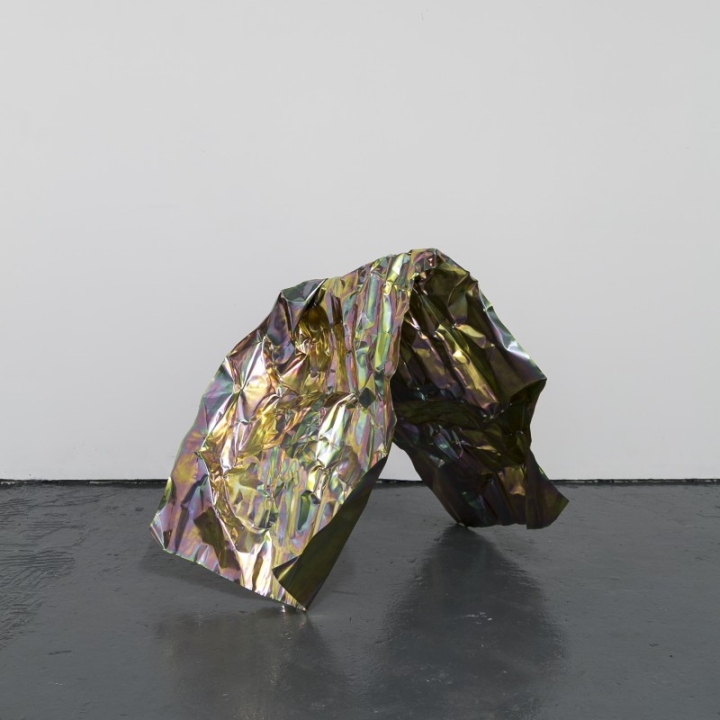
Mirroring the appearance of the roof in the gallery, the body-sized sheets on the floor anchor the installation in the gallery, offering a peripheral path through it. As the viewer stands at the threshold of the memorial, his desire to succumb to the holographic colours, is halted by the realisation of what appears to be reminiscent of an abandoned site. The metal wall-based sculptures ‘Untitled,’ displayed in a separate space of the gallery, are assembled in a patchwork, merged by a rhythmic pattern of rivets to create an impenetrable surface. This surface is interrupted by contrasting elements like air vents and loudspeaker holes suggesting alternative existences.

The project is a continuation of the artist’s investigation into modern day alchemy. The hand-sculpted corrugated steel sheets, damaged and vandalised in their appearance, have been treated by an industrial electroplating process. Each reflective sheet of conductive material has been immersed into twenty different baths. This process prevents metal from corrosion and creates an unpredictable and multi-coloured patina transmuting the base material into a regenerated object. The body of metal has been resurrected with a new skin and its mortality has been changed with the technological process.

According to the philosopher Boris Groys, it was after the material and technological shift, an “evolution able to overcome all possible disasters controlling the status of the human body,” at the end of the nineteenth century, that the attitude towards the body changed. It became a “medium due to which the human being could be better connected to nature, the animal world and the cosmos space.”







